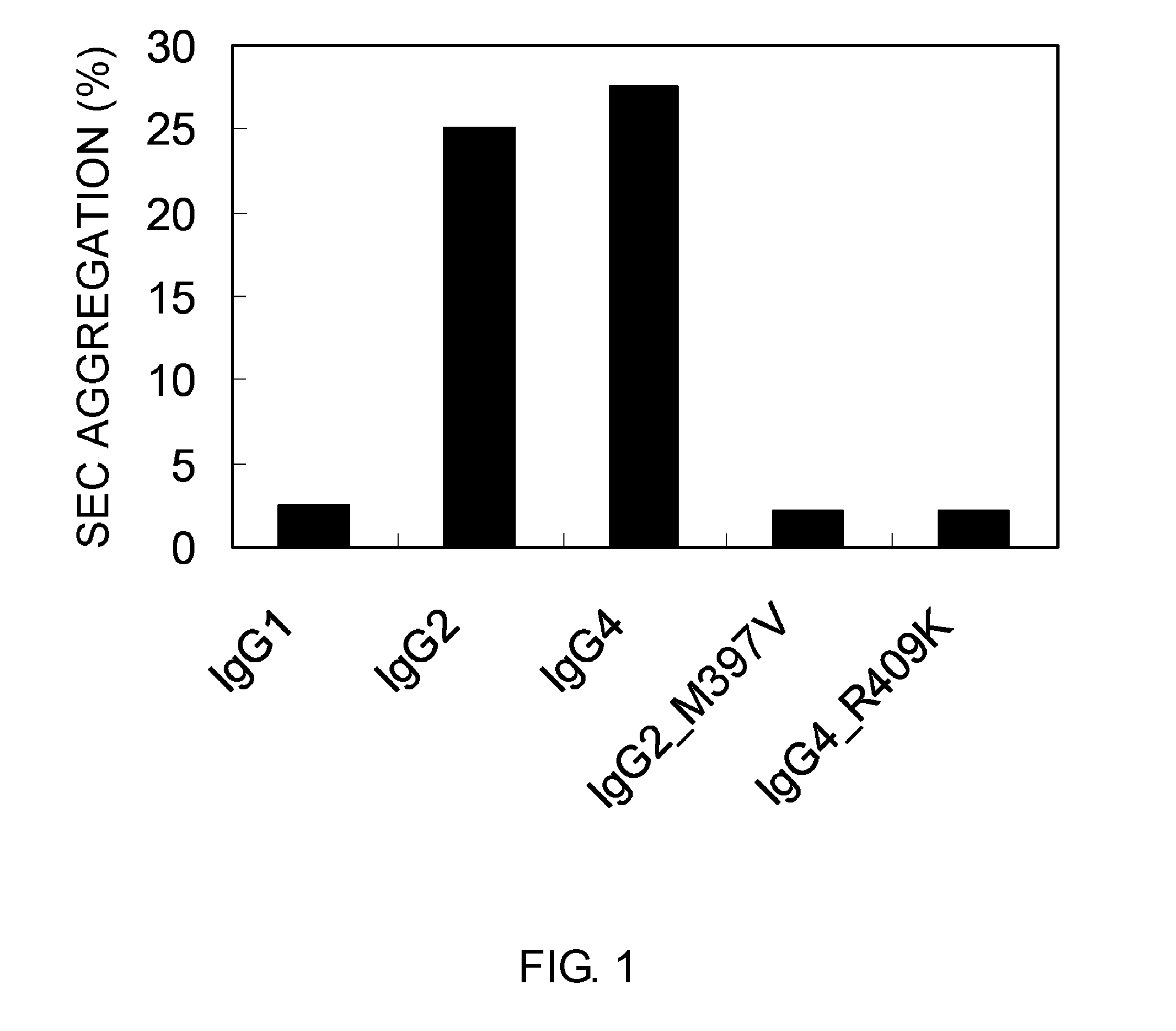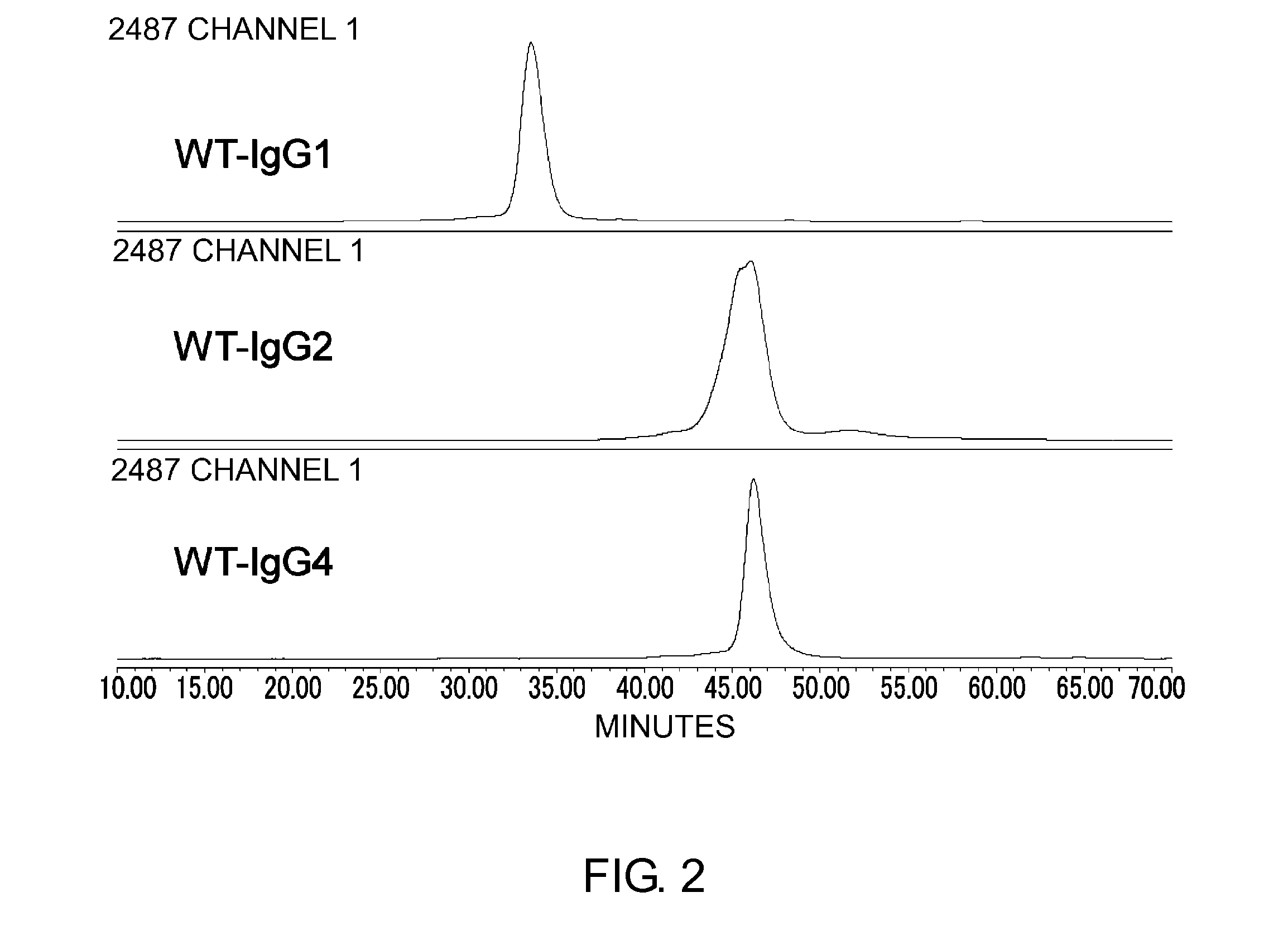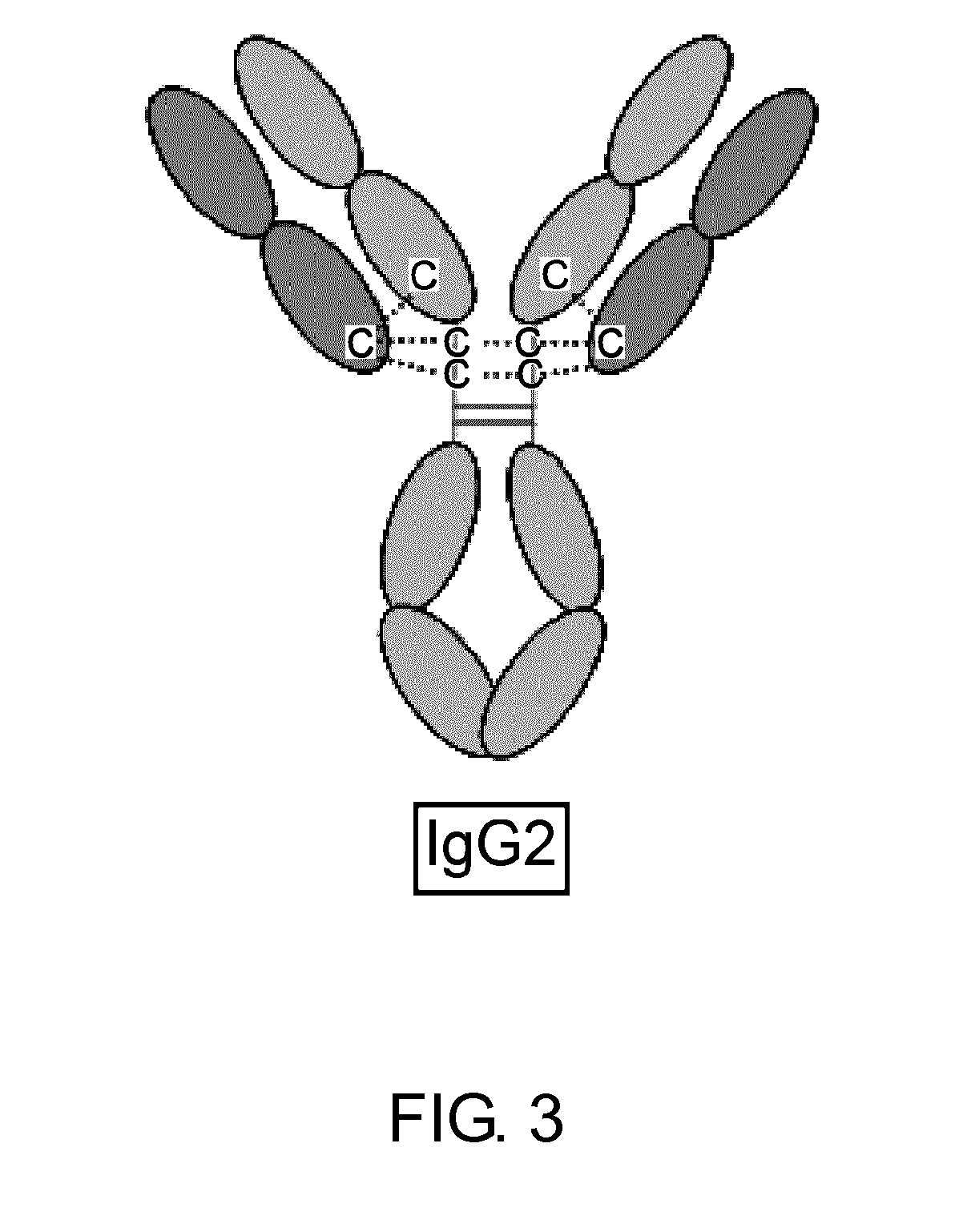Modified Antibody Constant Region
a constant region and antibody technology, applied in the field of antibody constant regions, can solve the problems of unfavorable binding to fc receptor, -cd4 antibodies, and the method cannot completely inhibit the binding, so as to improve immunogenicity, safety, and physicochemical properties. the effect of homogeneity
- Summary
- Abstract
- Description
- Claims
- Application Information
AI Technical Summary
Benefits of technology
Problems solved by technology
Method used
Image
Examples
example 1
Improvement of the Stability of IgG2 and IgG4 Under Acidic Condition
Construction of Expression Vectors for IgG2- or IgG4-Converted Humanized IL-6 Receptor Antibodies and Expression of the Antibodies
[0313]To reduce the Fcγ receptor-binding activity, the constant region of a humanized anti-human IL-6 receptor antibody, humanized PM-1 antibody (Cancer Res. Feb. 15, 1993; 53(4):851-6), which is of the IgG1 isotype, was substituted with IgG2 or IgG4 (Mol. Immunol. January 1993; 30(1):105-8) to generate molecules WT-IgG2 (SEQ ID NO: 13) and WT-IgG4 (SEQ ID NO: 14). An animal cell expression vector was used to express the IgGs. An expression vector, in which the constant region of humanized PM-1 antibody (IgG1) used in Reference Example 1 was digested with NheI / NotI and then substituted with the IgG2 or IgG4 constant region by ligation, was constructed. The nucleotide sequence of each DNA fragment was determined with a DNA sequencer (ABI PRISM 3730xL DNA Sequencer or ABI PRISM 3700 DNA Seq...
example 2
Improvement of Heterogeneity Derived from Disulfide Bonds in IgG2
[0332]Purification of WT-IgG1, WT-IgG2, and WT-IgG4 Through Acetic Acid Elution from Protein A
[0333]50 μl of rProtein A Sepharose™ Fast Flow (Amersham Biosciences) suspended in TBS was added to the culture supernatants obtained in Example 1, and the combined solutions were mixed by inversion at 4° C. for four hours or more. The solutions were transferred into 0.22-μm filter cups of Ultrafree®-MC (Millipore). After washing three times with 500 μl of TBS, the rProtein A Sepharose™ resins were suspended in 100 μl of aqueous solution of 50 mM sodium acetate (pH 3.3) and the mixtures were incubated for two minutes to elute the antibodies. Immediately, the eluates were neutralized by adding 6.7 μl of 1.5 M Tris-HCl (pH 7.8). The elution was carried out twice, yielding 200 μl of purified antibodies.
Analysis of WT-IgG1, WT-IgG2, and WT-IgG4 by Cation Exchange Chromatography (IEC)
[0334]Purified WT-IgG1, WT-IgG2, and WT-IgG4 wer...
example 3
Improvement of C-Terminal Heterogeneity in IgG Molecules
[0354]Construction of an Expression Vector for H Chain C-Terminal ΔGK Antibody from WT-IgG1
[0355]For heterogeneity of the C-terminal sequences of an antibody, deletion of C-terminal amino acid lysine residue, and amidation of the C-terminal amino group due to deletion of both of the two C-terminal amino acids, glycine and lysine, have been reported (Non-patent Document 12). The absence of such heterogeneity is preferred when developing antibody pharmaceuticals. Actually, in humanized PM-1 antibody TOCILIZUMAB, the major component is the sequence that lacks the C-terminal amino acid lysine, which is encoded by the nucleotide sequence but deleted in post-translational modification, and the minor component having the lysine also coexists as heterogeneity. Thus, the C-terminal amino acid sequence was altered to reduce the C-terminal heterogeneity. Specifically, the present inventors altered the nucleotide sequence of wild type IgG1...
PUM
 Login to View More
Login to View More Abstract
Description
Claims
Application Information
 Login to View More
Login to View More - R&D
- Intellectual Property
- Life Sciences
- Materials
- Tech Scout
- Unparalleled Data Quality
- Higher Quality Content
- 60% Fewer Hallucinations
Browse by: Latest US Patents, China's latest patents, Technical Efficacy Thesaurus, Application Domain, Technology Topic, Popular Technical Reports.
© 2025 PatSnap. All rights reserved.Legal|Privacy policy|Modern Slavery Act Transparency Statement|Sitemap|About US| Contact US: help@patsnap.com



